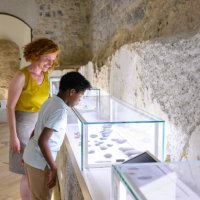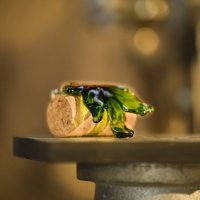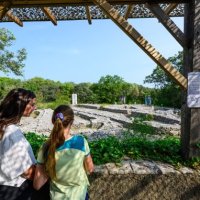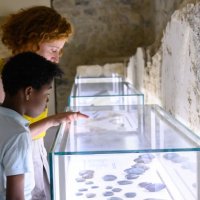The Buèges Valley

Born at the foot of the Séranne mountain, the Buèges offers, at its source, the spectacle of an oasis of nature and peace with translucent waters.
This discreet valley has managed to preserve its intimacy and its wild nature. But if you are willing to tame it, it will reveal its true beauty.
Surrounded by massifs, the steep-sided Buèges valley is not visible from anywhere, and there are few roads leading to it. From Saint-Martin-de-Londres, you have to climb up to the Causse-de-la-Selle and then descend to Saint-Jean-de-Buèges to discover an unexpected view of this hidden spot. The medieval village nestles at the foot of a rocky outcrop, with the imposing Séranne massif towering above.
In the middle of this verdant landscape flows a river: the Buèges. It meanders through the valley, dotted with the three small villages it serves: Pégairolles-de-Buèges, Saint-Jean-de-Buèges and Saint-André-de-Buèges.

The landscapes are varied: garrigue, vineyards, olive groves, meadows, woods, rivers, streams... They also tell a story. Buildings, low walls, irrigation channels and other features bear witness to the presence of people from ancient times in this land, whose isolation has preserved its authenticity.
Everything here encourages you to take your time. Time to discover, time to relax, time to meet people... And time to walk or cycle to discover its many treasures. Many footpaths criss-cross the area. Some easy walks take you close to the river banks. A perfect opportunity to swim, picnic and explore the unusual scenery that is revealed here and there, with its specific vegetation, colours and different atmospheres.
You'll also come across rocks of various, even surprising shapes: they have been sculpted by water, which sometimes seeps through the limestone and becomes underground. This valley is a complete change of scenery, an enchanted interlude in which to savour the moment and rediscover nature.
A route through the heart of the Buèges valley.

1 - LA SOURCE DE LA BUÈGES
Pégairolles-de-Buèges
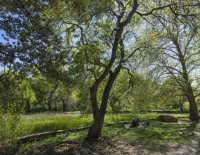
The Buèges rises in the hamlet of Méjanel, near the medieval village of Pégairolles-de-Buèges. At least, that's where it rises from the Séranne massif after an underground journey. It is this resurgence that gives the clear water that turquoise blue colour that adds to the magic of this lush spot.
You can picnic in the shade of the plane trees. However, swimming is prohibited in order to preserve the natural environment, which is rich in fauna, and the town's drinking water resources.
2 - LE CHÂTEAU DE BAULX
Saint-Jean-de-Buèges
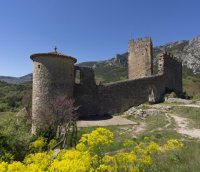
A protective sentinel over Saint-Jean-de-Buèges, the Château de Baulx stands proudly at the foot of the Tras Castel rock. It was originally a watchtower built in the 12th century. It was later extended to become the residence of feudal lords.
Abandoned in the 18th century, it gradually fell into ruin. When it was taken over by the local council in 1990, it was restored. In fine weather, it now hosts festive and cultural events. Guided tours are also available, thanks in particular to the dynamic Compagnons de Tras Castel association.
3 - LE ROC DE TRAS CASTEL
Saint-Jean-de-Buèges

Overlooking the castle of Saint-Jean-de-Buèges and the village nestling at its foot, this majestic cliff is a popular spot for rock-climbing enthusiasts.
With its magnificent views and high-quality limestone, the Roc de Tras Castel offers a wide variety of routes. Some are easy, others more challenging.
4 - PONT DE VAREILLES
Saint-André-de-Buèges

This pretty stone bridge with several arches spans the Buèges river. Narrow, it can only be used by pedestrians, cyclists and horse riders.
Built in the 15th century, it bears witness to the importance at the time of this communication route linking Saint-Jean-de-Buèges to the commune of Saint-André-de-Buèges.
5 - ÉGLISE SAINT-ANDRÉ
Saint-André-de-Buèges
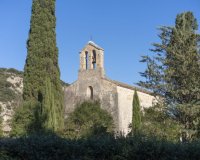
Built in the 11th century in the commune of Saint-André-de-Buèges by the monks of Saint-Guilhem-le-Désert and Aniane, the church of Saint-André is both elegant and modest.
Listed as a historic monument, the building features elements typical of the Romanesque art that appeared in Languedoc at the time. It also has a number of unusual features that make its architecture even more appealing. You can admire heritage religious objects such as this gilded wooden Virgin Mary from the 17th century and this ivory Christ from the same period.

